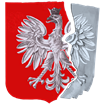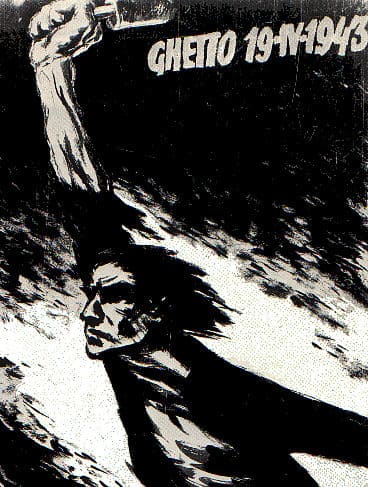Timeline of Events – 1943
World War II – Poland


General Wladyslaw Anders in Buzuluk

Katyn: Forensic expert inspects skull of exhumed victim.
January – AK launches 514 attacks of various kinds on German occupiers. In first four months of 1943, the Polish underground administers typhoid fever microbes and poison to 600 Germans.
January 12-24 – FDR and Churchill meet at Casablanca; issue unconditional surrender demand of Germany.
January 16 – Soviets reverse citizenship rights of Poles still held in USSR, claiming that Poles betrayed them when Anders led his army out of USSR.
February 4 – German Sixth Army surrenders at Stalingrad; the war has reached a turning point.
February 9 – Ukrainian Nationalists kill 173 Poles in Porosle near Sarny.
March 25 – In Sterdyn, SS executes 47 Polish farmers and deports 140 to concentration camps for the crime of Judenherbergerung, or harbouring Jews.
March 29 – Life magazine devotes issue to “Soviet-American cooperation” and describes the NKVD as “similar to the FBI” whose job it is to track down traitors.
April 13 – Nazis announce discovery of mass graves of Polish POWs in the forest near Katyn.
April 19 – Warsaw Ghetto Uprising. Some 600-1,200 poorly-armed Jews face 2,100 Germans with heavy weapons. Polish underground supplies Jews with 90 pistols, 600 grenades and explosives.
April 23 – Ukrainian Nationalists set fire to village of Zabara, and execute 750 Polish inhabitants.
April 26 – USSR breaks off relations with Poles following their demand for a Red Cross investigation of Katyn. Stalin prepares a pro-Soviet group of Poles in anticipation of taking over Poland.
April 28 – 30 – International commission visits Katyn and agrees that victims were shot three years earlier by Soviets.
May 3 – U.S. government tries to discredit findings of the commission at Katyn to placate Stalin. The U.S. government tells Polish radio stations at home to “pipe down” about Katyn and Soviet crimes.
May 4 – Ukrainian Galician division of the Waffen-SS is announced by the Wehrmacht and will be manned by thousands of volunteers urged on by Ukrainian leaders and the Ukrainian Catholic Church.
May 8 – Jewish partisans (Pobieda Brigade and Bielski Brigade) in collaboration with Soviets, rob and murder 128 inhabitants of the village of Naliboki.
May 16 – Warsaw Ghetto Uprising is suppressed by the SS; 7,000 Jews perish and 7,000 taken to Treblinka. About 10,000 Jews escape the ghetto but a third will be hunted down or betrayed. German losses are 300 killed.
June – The Ist Polish Infantry Division, the Tadeusz Kosciuszko Division, is formed in USSR under General Zygmunt Berling who had deserted Anders’ army. Freed Poles in the USSR who didn’t reach Anders’ army and Polish conscripts in the Red Army will form the 1st, 2nd, 3rd Polish Armies. About 200,000 Poles will fight alongside the Soviets under their command.
June 11 – Himmler orders the liquidation of Jewish ghettos in Poland.
June 30 – General Stefan Rowecki, Commander of the AK, is arrested by Gestapo in Warsaw. He will refuse to collaborate and will be executed in 1944. He is replaced by General Bor-Komorowski.
July 1 – Estimated 15,000 Poles have been murdered by the UPA in Wolyn by this date.
July 4 – 10 – Battle of Kursk. German armies are in retreat after this defeat.
July 5 – General Sikorski is killed in air crash off Gibraltar. Many suspect Soviet sabotage.
July 9 – Allied Forces land in Sicily.
July 11 – Start of the “Peter and Paul Action” in Wolyn. This campaign of ethnic cleansing by the OUN-UPA involves the mass slaughter of non-Ukrainian citizens, especially Poles.
July 12 – German police and Army units kill all 200 villagers of Michniow, including babies and expectant mothers, in attempt to stamp out Polish patriotic feeling.
August 9 – National Armed Forces (NSZ), a Polish group fighting both Nazis and Communists, kills 26 Polish partisans from the People’s Guard aligned with the Soviets.
August 17 – British launch a massive air attack on the German rocket programme at Peenemunde, thanks to intelligence reports by the Polish underground.
August 24 – Poles in London propose a “massive liberation of prisoners from Auschwitz” but fail to convince the Allies to bomb Auschwitz during raids on German factories in Silesia.
August 30 – Poles of Wola Ostrowiecka are rounded up by Ukrainian Nationalists. The men are hacked to death while women and children are packed into a school into which grenades are thrown: 550 people are murdered including 220 children.
October 10 – First raid by American B-17’s on German military targets in Poland.
October 12-14 – The 1st Polish Infantry Division, under Soviet command, sustains 25% casualties at Lenino.
October 16 – Nazis begin series of street executions in Warsaw. About 300 people will be killed weekly for the next few months.
November 3 – Nazis implement Operation Harvest in which 40,000 Polish children aged 10 to 14 are deported to forced labour camps in Germany.
November 13 – Germans execute 1,360 prisoners in Rowne, including a hundred members of the AK.
November 15 – Gassed at Auschwitz are 164 Poles including 12 female members of a resistance group.
November 28 – Roosevelt, Churchill and Stalin meet in Teheran. They secretly agree on Curzon Line as postwar boundary of Poland. The Polish Government-in-Exile is not informed.
December 3 – In Warsaw, the SS and Gestapo publicly execute a hundred tramway workers for an act of sabotage.
December 9 – Polish underground executes two Poles for betraying Jews to the Gestapo, and for denouncing Poles who sheltered Jews.
December 31 – Germans burn alive 59 Polish villagers in a granary at Karpiowak as reprisal for anti-occupation activities.
Christopher Jacek Gladun was born in 1951 and grew up in Canada to where his family emigrated from England as displaced persons. Sadly, Chris died in Toronto in March 2003. He held a diploma in Journalism from the Niagara College and a BA in Polish Language & Literature from the University of Toronto. Chris also acted as interviewer and researcher for the documentary film “Rescued From Death in Siberia”.
This content is now maintained by the Kresy-Siberia Group, which Chris was a charter member of and which is taking his website and his research work forward.